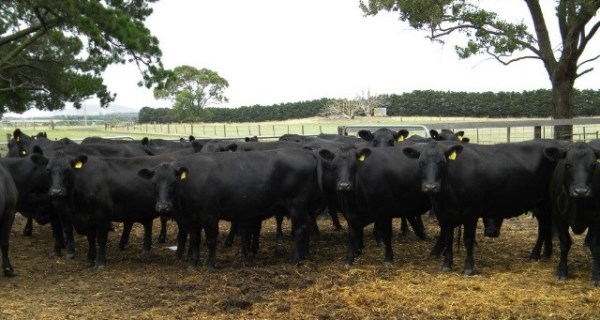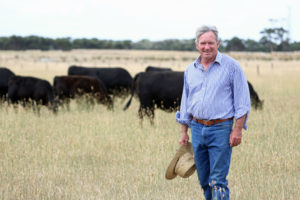
WHOEVER coined the phrase “you can’t have your cake and eat it too” never met Mike Carroll.
In the lush green paddocks of Victoria’s Western District, the Melbourne-based corporate heavy is enjoying the returns from his most passionate investment to date: Farming.
Mike – who is chairman of Queensland Sugar and sits on a number of agri-industry boards including Warrnambool Cheese and Butter, Rural Finance and the Gardiner Foundation – bought 265ha at Derrinallum six years ago.
He had recently stepped down as NAB Agribusiness general manager and quickly set about transforming it into a low labour-input operation.
More simply, a farm he could run four days a fortnight with minimal outside help.
Mike is no stranger to getting his hands dirty – his family has farmed at Mudgegonga, in Victoria’s North East, since the 1860s.
After school, he studied agriculture science at LaTrobe University before embarking on an agribusiness career that included stints with global chemicals giant Monsanto and a private venture-capital biotechnology firm.
But he is perhaps best known for his almost 20-year career with NAB, culminating in his appointment as agribusiness general manager.
“I always had a yearning to get back involved with farming. All through those years with a fairly heavy executive commitment at NAB I maintained a lot of interest and involvement in the family farm,” Mike said.
“When I left NAB the opportunity came up for me to buy my own place and do things my own way.”
Mike said he initially looked for land in the North East that could be run in conjunction with the family farm but found the region “pretty expensive” relative to its stocking capacity.
Vast tracts of land had been subdivided into 40ha lots “and that’s what has blown the cost out”.
“The appealing thing about the Western District is its affordability on dollars per dry sheep equivalent basis,” Mike said.
When Mike bought the property it was “in a pretty poor state of repair”. Soil phosphorus levels were low and the fences “dilapidated”.
He soon turned around the health of the soil and divided the property into 26 paddocks, which are now home to 200 Angus breeding cows on “a pretty simple four-paddock rotation program” where only one in four paddocks is used at any one time.
“I’ve set up the place so it is easier to keep an eye on. There’s one central laneway and every water point is just off the laneway so from the motorbike you can see whether the troughs have got water and there’s no leaks,” Mike said.
“It’s a pretty simple process to whiz down the lane and back to make sure everything’s OK.”
Neighbours Chris and Sharon McLeod look after things when Mike’s absent.
The farm receives an average 650mm of rain, which Mike said was “highly variable but probably more consistent than it is in the North East”.
It boasts a mix of soils – “from heavy, black self-mulching clays through to a little bit of lunette bank with a sandy loam – which is particularly good – as well as the normal Western District clay loam”.
The herd is a member of the Team Te Mania program – a benchmarking progeny-test system that involves 40 herds across Victoria, NSW and South Australia.
Under the program, bulls are leased from the Te Mania Angus stud at Mortlake for three years and members can access semen from leading Te Mania sires at reduced rates.
He described the team members – which aim to produce stock for the lucrative Japanese market – as “thinking” farmers.
Mike admits being a big fan of objective measurement – he covered the topic in his university thesis – and said he was attracted to Te Mania for its high-accuracy estimated breeding values.
In particular he pays close attention to figures for calving ease, mature cow weight, fat, days to calving, scrotal size, marbling and muscling.
Bulls are joined to cows for nine weeks from November 1 each year, resulting in a mid-August to September calving.
Mike said the timing was determined with the help of the McKinnon Project’s Lisa Warn, based on the CSIRO GrassGrow program and refined with the help of Meat and Livestock Australia’s feed demand calculator.
“What I was aiming to achieve was the maximum utilisation of the grass,” Mike said.
“By joining then, calving at that time, keeping the steers through the second spring allows me to get the highest feed utilisation I can.”
Stocking rates range from 13 dry sheep equivalents per hectare in autumn “when things get tight” to more than 20 DSE/ha during spring.
Mike wants to reduce joining to six weeks but “you always have this overhanging concern that a bull hasn’t been performing properly”.
“If I look at some of my production data, I need to lift the kilograms of beef I’m producing per hectare. And the best way to do that is with a tighter calving program. I just need to work out a way to take some of that risk out of a bull not performing.”
All the heifers are artificially inseminated, “which brings most of your heifer calving forward to very early in the calving period”.
They are joined at 15 months of age, weighing about 400kg, to calve at two years. Bulls used in the AI program are the “next generation of Te Mania genetics” and can be aged as young as 15 months.
“Given the heifer’s lower milk (production), it gives their calves more chance to catch up with the calves out of the older cows,” Mike said.
He said there were two rounds of AI, with about a 60 per cent strike rate in the first fixed-time insemination that meant most calved over 10 days.
“So there’s a 10-day period where I need to try and be at the farm. And then three weeks later you get another calving block with another 30 per cent (of heifers). It does make calving supervision a bit easier.”
Cows are joined to Te Mania-leased sires. One bull is used over 60 cows.
“I do push them a bit (in terms of bull-to-female ratio),” Mike said.
With a plan to improve the accuracy of breeding values in his own herd, Mike said bulls were ideally returned Team Te Mania lease sires “that have done a couple of seasons on one of the other progeny-test herds and are stacking up pretty well”.
“That is my preference over younger bulls,” he said.
“It also means I can use them over 60 cows whereas younger bulls I might only be able to put over 40 cows.”
Depending on “what’s coming through Te Mania and what’s available” the bulls will be retained for two or three years.
All calves are tagged at birth. The heifer’s calves are weighed while the cows’ calves are given a size score.
“That’s the period of the year when the workload is reasonably heavy and I try to be there for as much of that as I can. I enjoy it,” Mike said.
The calves run with their mothers for six months until they are weaned in February.
To avoid supplementary feeding, the calves are weaned as soon as their mothers start to slip in condition.
“Then hopefully the cows have enough condition to carry them all the way through the autumn until their next calving without any supplementary feeding,” Mike said.
Mike said he preferred yard weaning, whereby the calves are drafted off their mothers and spend two weeks in the yards being fed hay or silage with increased human interaction.
They are then let out in a phalaris paddock “that can take a bit of bashing”.
“They’ll stay there on feeders until we get that autumn break and wedge of feed,” Mike said.
“With this year’s late break I cut it a bit fine – the weaners were fed through until the early June and I used all of the hay purchased last spring.”
Mike said the calves weighed about 230kg when they came off the cows and “they don’t do too much more than hold their condition in that post-weaning period”.
“They might put on half a kilogram a day through until mid-winter and as we get to the end of winter they’ll start to pick up and through spring they’re putting on over 2kg a day,” he said.

